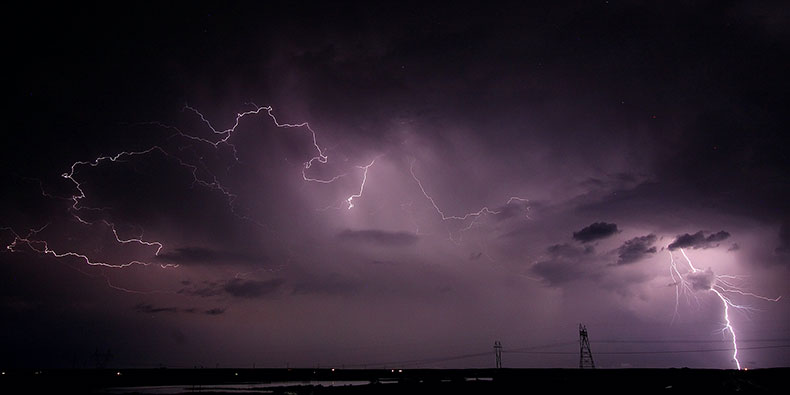Have you ever noticed your lights blink during a thunderstorm? Or perhaps you’ve noticed a blinking microwave clock when you arrive home. When this happens, you’ve likely experienced a brief disruption to your electric service, which could result from a power surge or blink. While the symptoms of surges and blinks can appear similar, what’s happening behind the scenes can be quite different.
What’s a power surge?
Power surges are brief overvoltage spikes or disturbances of a power waveform that can damage, degrade or destroy electronic equipment within your home or business. Most electronics are designed to handle small variations in voltage; however, power surges can reach amplitudes of tens of thousands of volts—which can be extremely damaging to your electronic equipment.
Surges can be caused by internal sources, like HVAC systems with variable frequency drives, or external sources, like lightning and damage to power lines and transformers.
Pee Dee Electric encourages all members to install surge protective devices (such as surge protector power strips) to safeguard sensitive electronics. If you’re experiencing frequent surges in your home or business and believe the cause is internal, contact a qualified electrician to inspect your electrical system.
What’s a power blink?
Power blinks are also brief service interruptions, but they’re typically caused by a fault (short circuit) on a power line or a protective device that’s working in reaction to the fault. Faults can occur through a variety of instances, like squirrels, birds, or other small animals contacting an energized power line, tree branches touching a power line, or lightning and other similar events.
Believe it or not, these brief power blinks caused by protective devices are actually good because that means the equipment is working as it should to prevent a prolonged outage.
In 2021 alone, Pee Dee’s small critters accounted for 120 of the 914 total sustained outages across our service area, and of those critters, squirrels tend to be the most common culprit.
“Pee Dee is taking a pro-active approach to reducing both the momentary and sustained outages associated with small animals,” stated Tony Eason, vice president of Engineering and Operations. Pee Dee has adopted insulated brackets to mount the fuse over the transformers serving your home. We also install covered copper jumpers and wildlife guards over transformer and arrestor bushings.
“These measures help insulate the path traveled by squirrels and prevent small bird outages as they land and take off from these locations,” Eason added.
You may also experience a brief interruption when protective devices that act like circuit breakers are working to detect the fault. Believe it or not, these brief power blinks caused by protective devices are actually good because that means the equipment is working as it should to prevent a prolonged outage.
Regardless of the cause, Pee Dee Electric crews will be on their way to inspect the damage and make necessary repairs after a power outage.
In case of an outage
If you experience a power outage, please call our outage hotline at 1-800-693-0190 or report it on the PeeDeePower mobile app.


